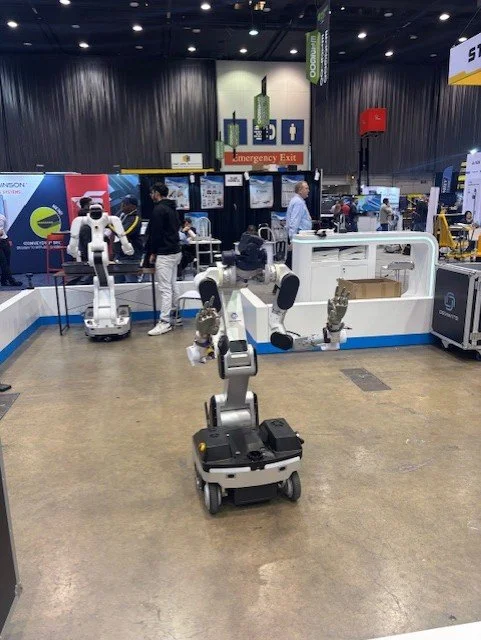What are the “Bleeding Edge” innovations in warehouse automation?
Following ProMAT and several study tours around the globe, Priority has seen a transformative shift in warehouse automation. Driven by advancements in robotics, artificial intelligence, and sensor technologies, these innovations are not just enhancing efficiency—they're redefining the very fabric of supply chain operations.
Container Unloading
Container unloading automation is revolutionizing logistics by integrating advanced robotics, artificial intelligence (AI), and machine learning to streamline the unloading process. These systems are designed to handle various types of cargo, including unpalletized goods, with minimal human intervention. The implementation of these automated systems leads to increased labour efficiency, reduced risk of injury, and improved accuracy in inventory management, however with long change over times and limitations on the type of product that can be unloaded, this technology still has some maturing to do before wider adaptation.
New Generation of Sensors
With Amazon’s introduction of new tactile sensors that allow picking arms to “feel” its way through different products, the range and complexity of tasks that can be done by a robot arm has now exploded. With the robot now knowing when its making contact and how much force its applying, the robot arm can pick up more delicate items, as well as rearrange items in a tote. This development could change the way we look at robot arms and completely remove the need for human picking.
There is also a jump in the accuracy of inventory and quality control in warehousing. With high quality 3D scanners fitted to crane robotics or drones, a clearer picture of inventory held and warehouse capacity can be achieved than previously thought.
Humanoid Robotics
Humanoid robots are beginning to make their way into warehouses, capable of performing tasks such as carrying objects and navigating complex environments. With warehouses and other machinery being designed for human ergonomics, it is easy to see how by designing robots that replicate the human form, you can automate existing processes or very complex tasks.
Whilst not currently a workable solution, we believe this technology has the potential to be one of the most successful products ever. When the technology matures humanoid robots will be able to complete any manual task a human could (and potentially more…). They will be able to work longer hours in more extreme conditions, so once the technology reaches a scale that makes them cost effective, if seems inevitable we will see a fundamental shift from man to machine.
Given the size of the prize, and the huge variety of industries that could utilise humanoid robots, we expect to continue to see large investments and technological progress in this area. Humanoid robots may outnumber human workers by the end of the 2030s!
Robot-As-A-Service (RaaS)
RaaS models are gaining traction, allowing companies to access advanced robotic solutions without significant upfront investment. This subscription-based approach provides flexibility and scalability, enabling businesses of all sizes to integrate automation into their operations. Though this helps eliminate capital costs, with software integration and maintenance, it is difficult to see how the payback stacks up. Though this helps eliminate up front capital costs the trade-off is the total amount spent will typically be higher than traditional purchase options. There may also be less flexibility than seen at surface level, minimum terms coupled with costs to remove systems (both direct and indirect) may reduce the level of flexibility in practice.
Please reach out to Graham Bingham (0421 191 818) and Ben Fenlon (0423 766 170) to discuss further and book a visit to our Test and Training Centre


